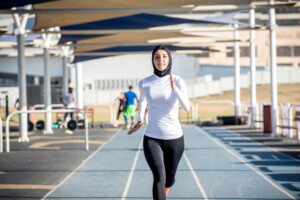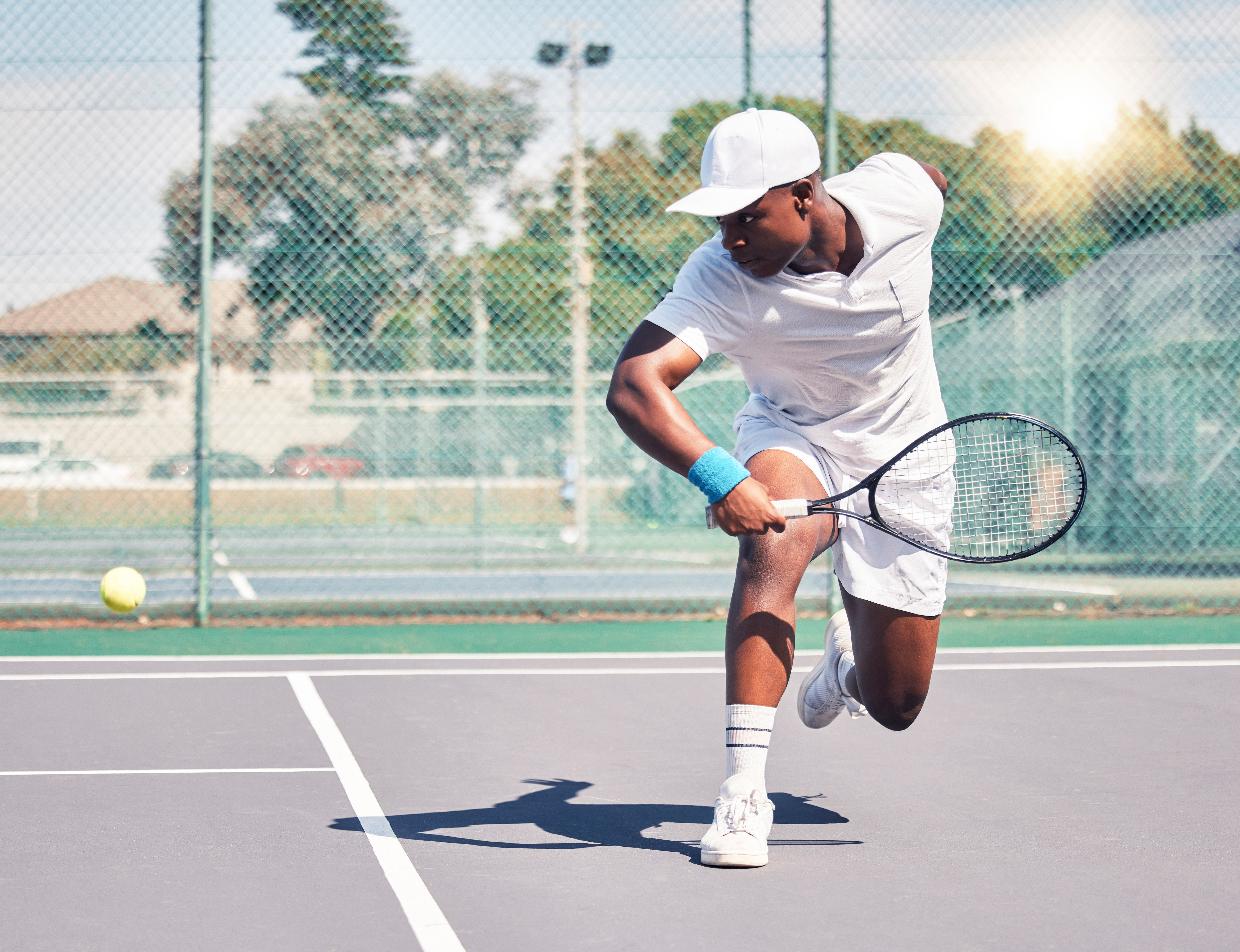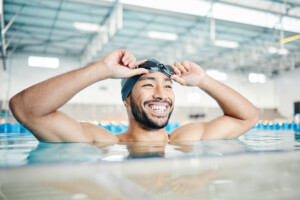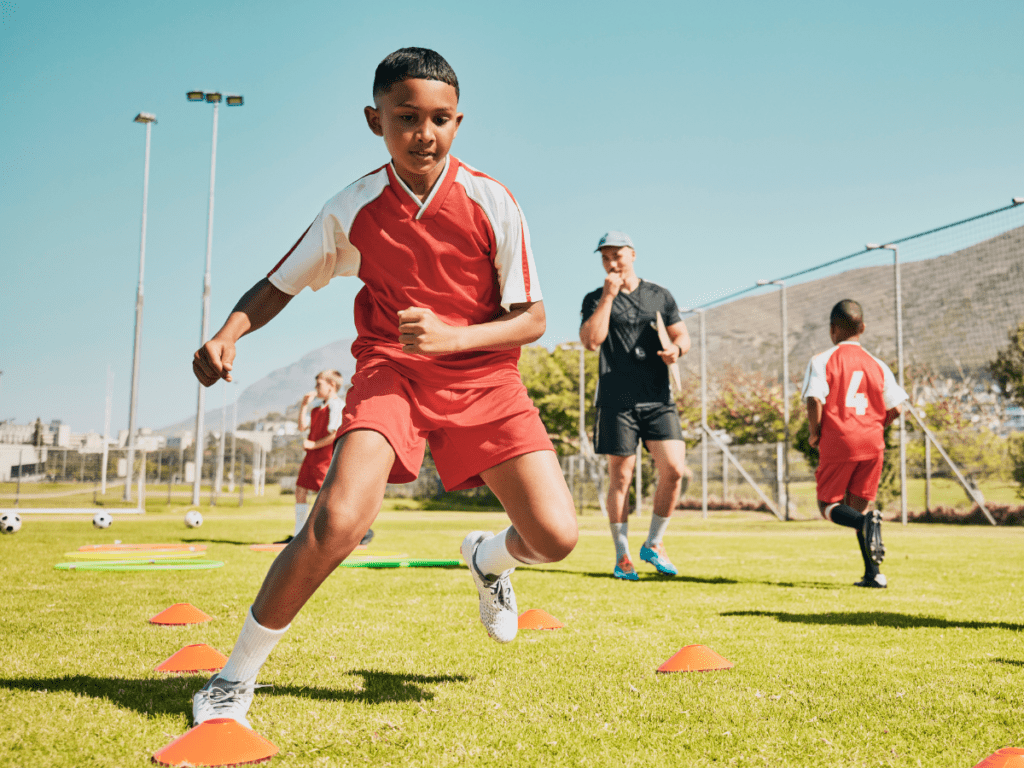
One in 4 Canadians is an immigrant, and this number is expected to reach 30% by 2036 (Statistics Canada, 2017). When immigrants arrive in Canada, their health is often good to optimal. As time passes, they may experience the multiple challenges of immigration, which can include finding housing, employment, community, and friends. In turn, immigrants may adopt unhealthy lifestyles that can lead to a decline in their health. This is known as the healthy immigrant effect (Elshahat & Moffat, 2022). When we say ‘immigrant,’ we are referring to a person who left their home country to settle permanently in another country (Government of Canada, 2016).

Participation in physical activity can provide positive benefits for individuals’ physical and mental health (Jakicic et al., 2019; Pascoe et al., 2020). It can also create a sense of belonging and provide an opportunity for social interaction and support, which can help in the process of integration in Canadian society (Schmidt et al., 2021). Despite these benefits, immigrants are not active enough (Mahmood et al., 2019).
Barriers to physical activity participation among immigrants in Canada include a lack of social support, language, program costs, and lack of culturally-tailored programs (Mahmood et al., 2019). Among women immigrants, who report lower rates of physical activity than immigrant men (Mahmood et al., 2019), barriers to physical activity include family responsibilities, religious concerns, and lack of energy, time, and commitment (Caperchione et al., 2015; Wieland et al., 2015). In this blog, we’ll describe our research on the physical activity experiences of immigrant women. We’ll also provide practical considerations for organizations looking to make physical activity and sport more accessible to immigrants.
About our study
For one of my doctoral dissertation studies, we recruited immigrant women by using a community-engaged research approach to understand and address their concerns and needs (Vaughn et al., 2018). This partnership was formed between Kingston Gets Active (KGA), a not-for-profit organization that provides physical activity resources to the Kingston community, and Immigrant Services Kingston and Area (ISKA), one of the main immigrant service providers in Kingston.
Driven by my involvement as an ambassador with KGA and my personal interest of being an immigrant and wanting to work with immigrants, I approached ISKA to learn about immigrant women’s needs related to their health and wellbeing. I met with the women over the course of 2 years and volunteered my time by co-leading some of the groups and providing translation from English to Arabic and vice versa whenever needed. Being a Muslim woman and an immigrant, and more recently a mother, facilitated my interactions with the participating women and made me more relatable.
Through my interaction with the women, we learned that there is a lack of physical activity participation and physical literacy, as well as a need to further explore this topic. As a result, KGA provided the women attending ISKA with 3 physical activity and physical literacy workshops. I also conducted interviews with 10 immigrant women to further explore physical activity, sense of belonging, and integration.
What we learned

Through this research, we learned that immigrant women wanted to be part of Canadian culture, and that physical activity in its simplest forms like walking, provided them with the opportunity to meet Canadians, which fostered their belonging to the community. Immigrant women also pointed out some of the barriers to being more active. One of these barriers is the lack of culturally adapted opportunities that suit their needs.
For example, women said they need facilities with women-only access and need to have an instructor who either understands their language and can communicate with them or who can communicate in English while providing the necessary adaptations for them to understand the language and the exercise. Other barriers mentioned by the women were lack of childcare, and the need to be in a group environment which can motivate them to exercise more consistently.
So, what can organizations do to make physical activity more accessible to immigrants and support their engagement in sports?
1. Let them voice their interests
When immigrants are part of the conversation, they will voice what they are interested in with respect to physical activity opportunities or sports involvement. This can be done by including immigrants in the planning and implementation of any activity. For example, immigrants might have previous experience of physical activity participation and might like to participate in a similar activity. Others might have no experience at all and might like some guidance and coaching.
2. Be mindful of religious and cultural considerations
Accommodating religious and cultural diversity should be an important priority for sport and physical activity organizations wanting to be inclusive of others, especially immigrants. For instance, some immigrants are not comfortable playing a particular sport where there are different sexes in the same game and may prefer a female-only team. Being mindful of dress codes, training on religious observation days, and being aware of fasting efforts on religious days can be very helpful for this population.
3. Representation matters

Quite often we all need a push to try something new, and the same applies to immigrants. Having an immigrant on a sports team and in positions of leadership can provide immigrants with a sense of belonging and safety and could facilitate their participation in a sport or other physical activities. For example, immigrant youth who wear a hijab might feel more included if there is someone on the team who looks like them.
4. Include families
One of the main barriers to physical activity and sports participation among immigrant women is the lack of childcare. Including families in one program together can lessen this barrier and provide a space for families to meet each other and socialize, while being physically active.
Concluding thoughts
There is no doubt that the immigrant population is increasing in Canada, and research has shown that their involvement in physical activity and sports can provide a great opportunity for both Canadians and immigrants to learn about each other’s culture and foster integration and belonging while enhancing their health and wellbeing. Providing immigrants with the opportunity to participate in physical activity can go a long way, but this cannot be done without having them be part of the conversation so that opportunities are tailored to their needs.